Citrus Varieties & More
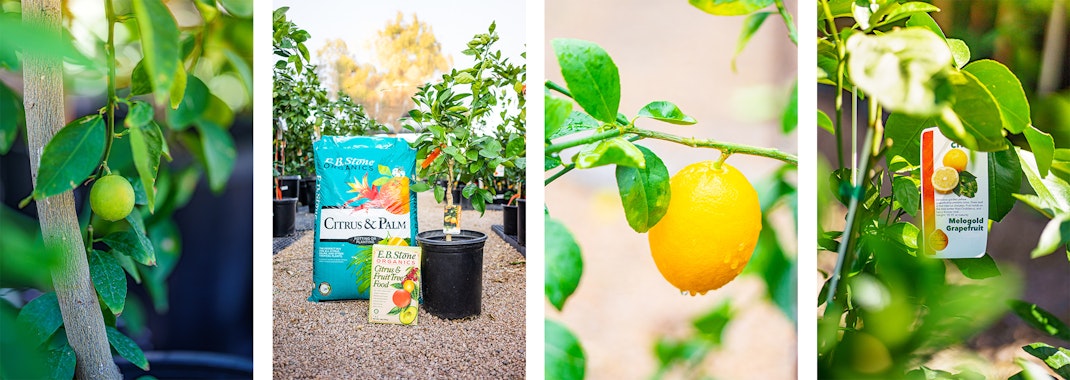
There's Nothing Like Citrus!
Do you enjoy the taste of fresh citrus—whether juiced, eaten raw, or added as an ingredient in your favorite dish or drink? Citrus and fruit trees can be a beautiful, tasty and nutritious addition to your edible garden.
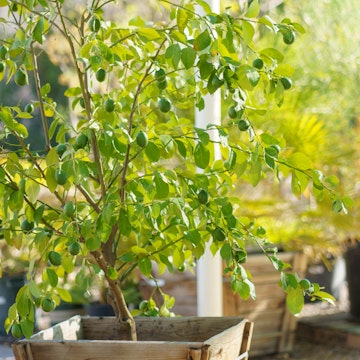 Our Citrus Trees
Our Citrus Trees
Select varieties available in the following sizes:
- 5 gallon - 2 to 3 years old
- 15 gallon - 3 to 5 years old
- 24 inch boxed tree - 5 to 6 years old
- Semi-dwarf sizes and standard sizes available in select varieties only
Sizes and selection varies seasonally by location, while supplies last. Contact your local SummerWinds Nursery with questions about current availability, specific varieties or sizes.
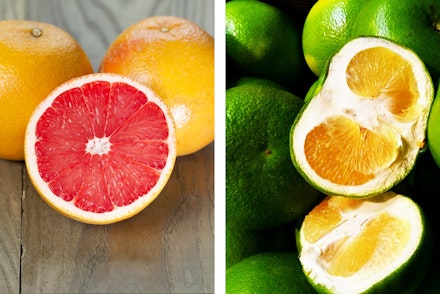
Grapefruits & Pummelos
A grapefruit (Citrus × paradisi) is a hybrid of pummelo and sweet orange, known for its juicy, tangy flavor. In contrast, a pummelo (Citrus maxima) is its larger, milder ancestor with a thick rind and drier flesh. While grapefruits are more tart and juicy, pummelos are sweeter and less acidic. Both thrive in the Valley's warm climate with full sun and well-draining soil.
Grapefruit is often classified as either white or red, but did you know that white grapefruit can be just as sweet as red? With the right growing conditions, both varieties thrive in the Valley's climate, producing juicy, flavorful fruit perfect for fresh eating, juicing, or adding to recipes. Whether you prefer the tangy zest of red grapefruit or the subtle sweetness of white, Arizona’s sunshine brings out their best flavors!
Grapefruits
- Cocktail Grapefruit - Technically not a true grapefruit, this grapefruit-pummelo hybrid has low acidity, extra sweetness, and a juicy texture. Contains some seeds but is easy to peel and eat fresh.
- Flame Grapefruit - A juicy, deep-red grapefruit with rich flavor and fewer bitter notes. Reliable in our desert climate, it ripens mid- to late winter.
- Marsh Grapefruit - A classic white grapefruit with pale flesh, mild sweetness, and a slightly tangy flavor. Nearly seedless and excellent for juicing.
- Melogold Grapefruit - A cross between a pummelo and a white grapefruit, Melogold has a juicy, sweet flavor with very little acidity. It thrives in the warm temperatures of the Valley of the Sun.
- Oroblanco Grapefruit - Similar to Melogold, this variety is seedless, thick-skinned, and has a mild, sweet flavor. It grows well in the greater Metro Phoenix area, provided it gets full sun and occasional frost protection.
- Rio Red Grapefruit - A popular red grapefruit with deep red flesh, high juice content, and a balanced sweet-tart flavor. Thrives in the desert heat.
- Ruby Red Grapefruit - A classic grapefruit variety with blushed yellow skin and sweet-tart, pinkinsh-red flesh. Can thrive in the Valley's warm climate with proper sun exposure and occasional frost protection.
- Valentine Grapefruit - A unique hybrid of Siamese Sweet Pummelo, Dancy Mandarin, and Ruby Red Grapefruit, with berry-like sweetness and low acidity. Ripens around Valentine's Day.
Pummelos
- Chandler Pummelo - A large, sweet pummelo with thick skin and juicy pink flesh. It requires ample space and benefits from some protection against strong summer heat.
- Tahitian Pummelo - A smooth, thin-skinned pummelo with juicy, pale yellow to light pink flesh and a mildly sweet, low-acid flavor. It has fewer seeds and a thinner rind than most pummelos. Thrives in the Valley's warm climate with full sun and deep watering.
- Valentine Pummelo - A unique hybrid with a rich, berry-like flavor, Valentine Pummelo ripens around Valentine’s Day. It does well in the Valley with proper irrigation.
Each of these varieties does well with full sun, well-draining soil, and regular deep watering in the greater Metro Phoenix area!
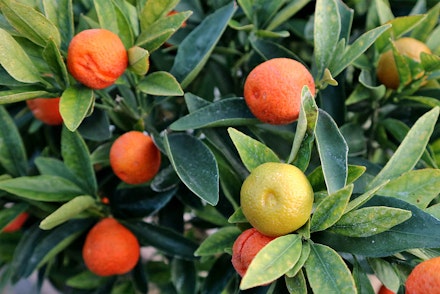
Kumquats
Kumquats are small, tangy citrus fruits with edible peels, perfect for snacking, garnishing dishes, or making marmalade. They are cold-hardy but appreciate some frost protection in the greater Metro Phoenix area.
- Fukushu Kumquat - Larger than other kumquats, with a balanced sweet-tart flavor.
- Meiwa Kumquat - Exceptionally sweet and juicy, this variety is great for eating fresh.
- Nagami Kumquat - The most common variety, with a sweet skin and tart flesh.
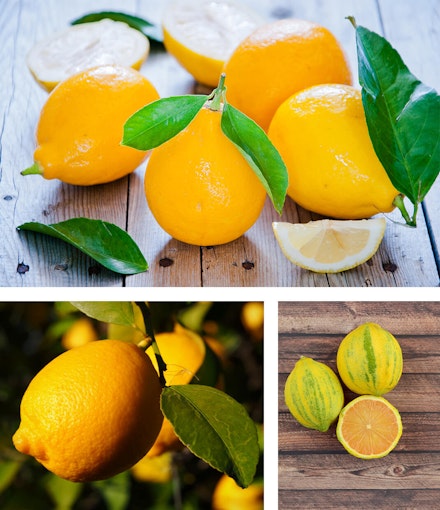
Lemons
Lemons are versatile in the kitchen and garden, prized for their tangy juice and fragrant peels. In the Valley of the Sun, they require consistent irrigation and protection from extreme temperatures.
- Buddha's Hand Lemon - An unusual citrus with finger-like segments, often used for zesting and fragrance.
- Eureka Lemon - A classic supermarket lemon with tart, juicy flesh and a nearly year-round harvest.
- Genoa Lemon - A cold-hardy Italian variety with thick skin and rich lemon flavor.
- Lisbon Lemon - Similar to Eureka but more cold-resistant, making it a good choice for Phoenix gardens.
- Improved Meyer Lemon - A sweeter, less acidic hybrid of a lemon and an orange, ideal for fresh eating and desserts.
- New Zealand Lemon - A hardy, juicy lemon with bright yellow skin and strong acidity.
- Pomona Sweet Lemon - A unique lemon with low acidity and mild sweetness, perfect for fresh eating or refreshing drinks. Grows well in the Valley’s warm conditions.
- Ponderosa Lemon - A large, thick-skinned lemon hybrid with very juicy, mildly tart flesh.
- Variegated Pink Eureka Lemon - A strikingly beautiful lemon with pink flesh and green-striped skin, producing a milder, tangy juice.
All grow well in the Valley's warm climate with full sun and deep watering!
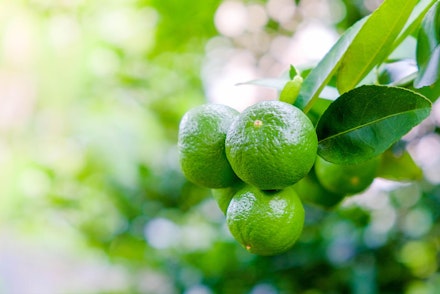
Limes
Limes are delicious and can be used in a wide number of recipes for food and drinks. Note: limes are very frost-sensitive and require protection from frost.
- Australian Finger Lime - A unique citrus with caviar-like juice vesicles, used in gourmet cuisine.
- Bearss Seedless Lime - A seedless Persian lime with a mild, juicy flavor.
- Giant Key Lime - Larger than traditional Key limes, this variety produces juicy, flavorful fruit with that classic Key lime zing. A strong performer in the desert heat.
- Mexican Key Lime - A small, tart lime with a classic citrusy aroma.
- Mexican Thornless Lime - Similar to Mexican Key Lime but without the sharp thorns.
- Palestine Sweet Lime - A juicy, mild lime with little acidity. Popular for fresh eating and traditional Middle Eastern drinks.
- Persian Lime - The most popular lime for home gardens, with seedless, medium-sized fruit and smooth green skin. Great for year-round harvests in the Valley.
- Rangpur Lime - More like a tart mandarin than a lime, often used for preserves and cocktails.
- Thai Lime - Known for its fragrant leaves and bumpy-skinned fruit, essential in Thai cooking.
We also carry a limited number of Limequats.
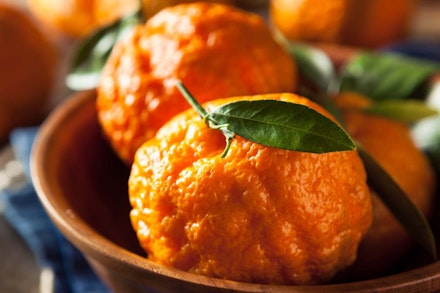
Mandarins
Mandarins thrive in the Valley’s warm climate, needing full sun, well-draining soil, and consistent watering for the best fruit quality. Many easy-to-peel and flavorful varieties grow well in the area.
- California Honey Mandarin - A sweet, aromatic variety with a thin peel. Grows well in Phoenix but needs protection from extreme heat.
- Clementine Mandarin - Easy-to-peel, sweet, and popular. Thrives in Phoenix but may need some shade in summer.
- Clementine De Nules Mandarin - A high-quality, nearly seedless variety. Grows well in Phoenix with regular watering.
- Clementine Nour Mandarin - Sweet and juicy with a smooth peel. Does well in Phoenix’s warm climate.
- Daisy Mandarin - A sweet, rich-flavored mandarin with deep orange flesh and a thin, easy-to-peel rind. Produces well in warm climates.
- Dancy Mandarin - Rich, tangy-sweet flavor. Heat-tolerant but benefits from afternoon shade.
- Fremont Mandarin - An early-ripening mandarin with easy-to-peel skin and sweet-tart flavor. Reliable and productive in Arizona’s desert climate.
- Gold Nugget Mandarin - One of the best-tasting mandarins. Ripens late and holds well on the tree. Great for Metro Phoenix gardens.
- Kinnow Mandarin - Strong, sweet-tart flavor. Heat-tolerant but has many seeds. Thrives with consistent watering.
- Lee x Nova Mandarin - Juicy and aromatic with a bright orange peel. Does well in the desert climate.
- Owari Satsuma Mandarin - Cold-hardy and seedless, great for winter harvests. Needs heat protection in summer.
- Royal Mandarin - Tangy and juicy hybrid. Tolerates heat but needs deep watering.
- Tango Mandarin - Seedless and easy to peel. Excellent grower in the Valley with proper summer protection.
We also carry a limited number of Calamondins, Tangelos, and Tangerines.
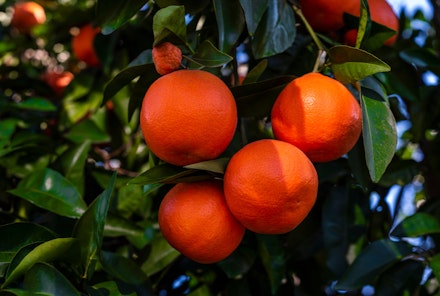 Oranges
Oranges
Who doesn't love a fresh, juicy orange? Here are some delicious varieties that grow well in the Valley:
- Arizona Sweet Orange - A versitile, juicy orange with a well-balanced sweet flavor.
- Cara Cara Navel Orange - A pink-fleshed navel orange with a sweet, berry-like flavor and low acidity.
- Early Hamlin Orange - A prolific early-season orange with sweet, mildly tangy juice.
- Lane Late Navel Orange - A late-ripening, seedless navel orange with juicy, sweet, and mild flavor.
- Midnight Orange - A late-season, seedless sweet orange with rich flavor and juicy flesh.
- Midknight Valencia Orange - A seedless Valencia variety with extra juice and intense sweetness. Great for juicing.
- Moro Blood Orange -The deepest red blood orange, with a bold, tart flavor and raspberry-like notes.
- Navel Orange - A classic, seedless sweet orange known for its easy-to-peel skin and rich flavor.
- Autumn Gold Navel Orange - A late-season navel that extends the harvest window, producing large, seedless, sweet fruit well into winter. Thrives in our Valley sun.
- Robertson Navel Orange - A sweet, seedsless navel variety, closely related to Washington Navel but ripens slightly earlier.
- Sanguinelli Blood Orange - A spanish blood orange with red-streaked skin and deep crimson flesh, sweet with berry hints.
- Smith Red Orange - A deep red-fleshed, sweet orange with high juice content and mild acidity.
- Sour Orange - A hardy, aromatic citrus with tart, bitter fruit ideal for marmalades and culinary uses.
- Tarocco Blood Orange - A sweet, seedless blood orange with less red pigmentation but excellent flavor.
- Trovita Orange - A hardy, sweet orange that thrives in desert climates. Great for eating fresh or juicing.
- Valencia Orange - The classic juicing orange, with sweet, tangy flavor and high juice content. Ripesn late in the season.
- Washington Navel Orange - One of the most popular oranges, seedless, sweet, and easy to peel. Ideal for fresh eating.
All thrive in the Valley's warm climate with full sun, well-draining soil, and deep watering!
Citrus is available seasonally, while supplies last. Selection varies by location. We recommend contacting your preferred SummerWinds Nursery location to confirm availability.
Your local SummerWinds Nursery also offers a wide variety of seasonally available tropical fruits, which includes some additional citrus varieties.
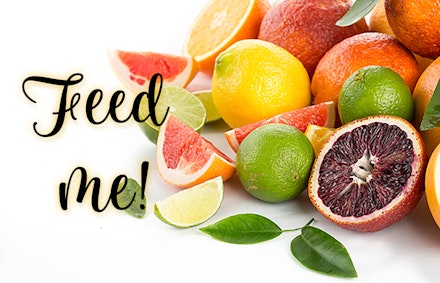
Fertilize Your Citrus Trees & Shrubs
We recommend fertilizing your citrus three times a year—in September, February and May.
Click the buttons below to learn more about citrus:
Citrus Feeding Time Citrus Tree Care Semi-Dwarf Citrus TreesPlanting a Tree?
Watch our video to learn how to do it like the pros!
This video will show you the basics to planting trees, shrubs and more. We will focus on trees but the same can apply to shrubs, perennials and more. With these simple steps, you can successfully plant your next garden.
At SummerWinds, We Guarantee Success!

